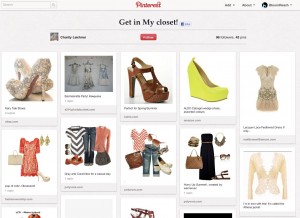
Pinterest appears to be a retailer’s dream. It’s a platform filled with appealing visuals and many happy users sharing things they enjoy and often want to buy. Images are pinned, liked, shared, and ideally…clicked, leading potential customers to a product page where they can purchase the item. While many smart retailers recognize this, there’s a simple chance to boost conversions right away by directing users from Pinterest to a more relevant landing page.
According to Bizrate’s recent survey of online consumers, 19% have visited Pinterest or a similar site. Of those, 32% have bought something after seeing it on the site. Not bad right? That’s about 6% of all online consumers having purchased through a site that’s still technically invite only for new members. Pretty good, but it could be better.
Let’s dig deeper into the data from Bizrate. The 32% of purchases consists of 2 groups:
- 26% clicked an image that took them to the right product page, which they purchased.
- 6% purchased but had to look for the item elsewhere since “clicking on the image did not take me to the retailer”.
- And 10% of those who did not purchase say they saw things they wanted to purchase but were “unable to find them”.
So that’s 16% of visitors (or 3% of online consumers) who clicked with a desire to buy and landed somewhere that didn’t empower them to follow through on their intent. Some gave up. Others likely found the item on a different retailer’s website. Why not give them what they want?!?!
If a retailer is going to post Pins themselves or enable their online customers to post catalog images to Pinterest with the pin button, take the time to link to the right relevant landing page. Data showing that Pinterest users are 10% more likely to buy and spend 10% more than those referred from other social sites mean the upside of creating a great, relevant user experience is even bigger.
Beyond that initial uplift in conversions, the survey cited 27% of users who have never bought anything via Pinterest but have “seen things that I want to purchase but did’t take the time to look for them”. These people are low hanging fruit. Treat the 16% we discussed above well and they – along with the 26% of happy purchasers – will evangelize purchasing via Pinterest and chip away at that 27%. Once the positive word-of-mouth of a great Pin-to-buy experience takes hold, the conversions will follow.